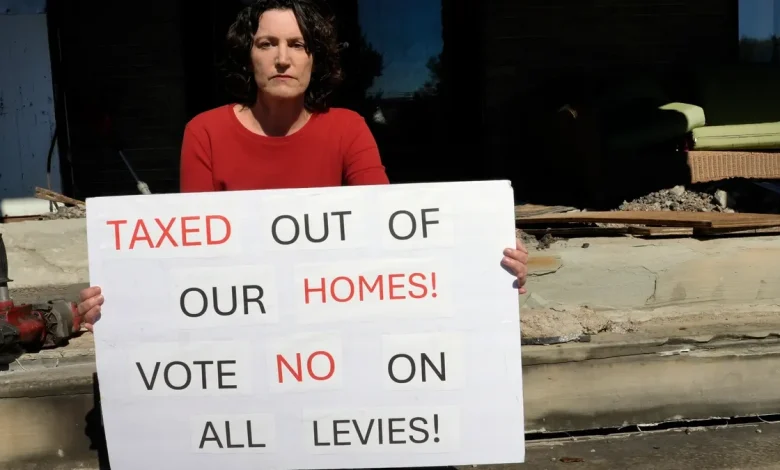The 20-mill floor is why your taxes jump when property values rise | Opinion

The 20-mill floor is Ohio’s quietest tax scandal.
| Opinion contributor
In 1967, we bought our first home for $21,000. We sold it in late 1979 for $62,000. In less than 12 years, in a booming real estate market, the value of our first home almost tripled.
During the same time, our property taxes increased by only about two-thirds or 66%. That was mostly the result of new tax levies. If our property taxes were based on our home’s market value, why didn’t our property taxes triple as well?
The answer was House Bill 920, passed in the mid-70s. That legislation rolled back most voted levies so that taxing entities did not get more money than the voters approved when their value increased. Local governments and schools did not get windfalls of new money. Taxpayers did not face huge, unvoted tax increases during periods of rapidly rising real estate values.
In the 1980s, school lobbyists made an end run around House Bill 920 with the “20-mill floor.” It lets any school district with General Fund taxes under 20 mills avoid the rollbacks. Those school districts did not have to make the case for more money with levy campaigns. They just let a rising real estate market provide them with more funds, whether they needed them or not.
It did not take long for school districts that were not at the 20-mill floor to figure out how to adjust their budgets so they were. Legislators were also persuaded by school lobbyists to eliminate substitute and emergency levies from counting toward the 20 mills.
In 2006, in Hamilton County, the Indian Hill and Oak Hills school boards proposed reducing their General Fund millage to get under the 20-mill floor. As a member of the County Budget Commission, I voted against both proposals but was outvoted by the other two members, the county prosecutor and treasurer.
The Indian Hill effort was reversed by the Ohio Supreme Court when a resident sued. But the Oak Hills reduction stood. And ever since, as property values in the district increased, residents received unvoted tax increases.
In 2024, property values in Delhi and Green townships reflected the higher real estate market. Values here went up by 30% to 35%. Our property taxes jumped by 25%. All because Oak Hills budgeted to get under 20 mills for their General Fund 18 years previously.
Our townships, police, fire and life squads, and road departments did not get any more money from the higher property values. But the Oak Hills schools did. Without the 20-mill floor, our property tax increase would have been negligible.
This year, Oak Hills seeks a new bond issue to replace one that is expiring. The new levy will not raise taxes. But voting it down will lower taxes and get back some of the unvoted increases the school district has been getting for almost two decades.
I wonder why legislators and news reporters and columnists avoid discussion of or even acknowledge the impact of the 20-mill floor. Removing it would cancel future unvoted tax increases when property values rise. Instead, legislators and the news media keep nibbling at the edges and coming up with complicated, confusing, and expensive proposals to try and give the impression of protecting Ohio taxpayers.
Most people do not understand why their property taxes are going up more than the rate of inflation. Some take advantage of that to pretend they are doing something to rein in these rises.
The merry-go-round may stop when everyone admits the 20-mill floor exemption to the rollbacks is the problem. Either that, or the current petition drive will succeed and we will get the opportunity to vote to end all property taxes in the state next year.
Dusty Rhodes was the Hamilton County Auditor from 1991-2023.





